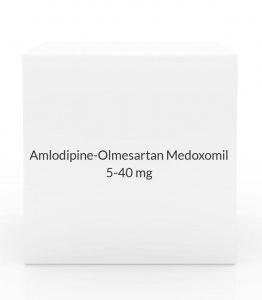Active Ingredients
The active ingredient in Gabapentin 600 mg tablets is gabapentin. Gabapentin is chemically similar to the neurotransmitter gamma-aminobutyric acid (GABA), although it does not directly affect GABA receptors. Instead, it binds to a specific type of calcium channel in nerve cells in the central nervous system, inhibiting the release of excitatory neurotransmitters. This mechanism is believed to help reduce nerve excitability, thus providing relief from pain and preventing seizures.
In addition to the active ingredient, the tablet also contains inactive ingredients, which may vary depending on the manufacturer. These excipients help form the tablet, stabilize the medication, and improve its absorption.
How Does it Work?
Gabapentin influences how nerve signals are transmitted in the brain and nervous system. It targets the voltage-gated calcium channels in the brain and spinal cord, which are involved in nerve signal transmission. By binding to these channels, Gabapentin reduces the release of excitatory neurotransmitters such as glutamate, which are responsible for causing nerve pain and stimulating excessive electrical activity in the brain. This action makes Gabapentin effective for treating conditions like neuropathic pain and epilepsy.
- Neuropathic Pain: In cases of neuropathy, where nerve damage leads to chronic pain, Gabapentin helps by reducing the abnormal firing of nerve cells, alleviating pain.
- Seizure Control: Gabapentin’s ability to stabilize the electrical activity in the brain also makes it effective as an adjunct therapy for controlling partial and generalized seizures in individuals with epilepsy.
- Restless Leg Syndrome (RLS): Gabapentin helps to reduce the discomfort associated with RLS by stabilizing nerve activity in the lower limbs, making it easier to manage the condition.
- Anxiety Disorders: Although not officially approved for anxiety in all regions, Gabapentin is sometimes used off-label to treat anxiety disorders due to its calming effects on the central nervous system.
Uses
Gabapentin 600 mg tablets are used to treat a variety of conditions, including but not limited to:
- Neuropathic Pain: Gabapentin is commonly prescribed for conditions such as diabetic neuropathy, post-herpetic neuralgia (pain following a shingles infection), and nerve pain caused by spinal cord injuries.
- Epilepsy: Gabapentin is used as an adjunct therapy in the treatment of partial-onset seizures and generalized seizures in people with epilepsy.
- Restless Leg Syndrome (RLS): The drug helps reduce the symptoms of RLS, including the uncomfortable urge to move the legs, particularly at night.
- Anxiety: Although it is not FDA-approved for anxiety disorders, Gabapentin is sometimes used off-label to help manage stress, particularly generalized anxiety disorder (GAD) and social anxiety disorder.
- Fibromyalgia: Gabapentin may be prescribed for individuals who have fibromyalgia, a condition characterized by widespread pain, fatigue, and sleep disturbances.
- Hot Flashes: Some studies suggest that Gabapentin can help reduce the frequency and severity of hot flashes in menopausal women.
Benefits
The use of Gabapentin 600 mg tablets offers several potential benefits, especially for patients suffering from chronic conditions that are difficult to manage with other medications.
Pain Relief: Gabapentin is highly effective in reducing neuropathic pain. For patients with diabetic neuropathy, shingles-related pain, or pain from nerve injury, Gabapentin can offer significant relief.
Seizure Control: Gabapentin helps control partial seizures, reducing the frequency and severity of epileptic episodes, and can be an essential adjunct to other anti-seizure medications.
Improved Sleep Quality: For individuals with Restless Leg Syndrome or fibromyalgia, Gabapentin’s ability to stabilize nerve function often leads to improved sleep quality and reduced sleep disturbances.
Reduced Anxiety: Although not officially approved for anxiety, Gabapentin’s calming effects on the nervous system make it a practical option for off-label anxiety management in specific individuals.
Lowered Incidence of Hot Flashes: Gabapentin may help alleviate the intensity and frequency of hot flashes in women undergoing menopause.
Side Effects
Like all medications, Gabapentin 600 mg tablets can cause side effects. Some people experience mild side effects, while others may have more severe reactions. Common side effects include:
- Drowsiness: One of the most common side effects is drowsiness, especially during the initial stages of treatment. Patients are advised to avoid driving or operating heavy machinery until they know how the medication affects them.
- Dizziness: Some individuals may experience dizziness or lightheadedness, increasing the risk of falls, especially in older adults.
- Fatigue: Gabapentin can exhaust people, which may interfere with daily activities.
Recommendations for Safe Usage
Dosage: Gabapentin should be taken exactly as prescribed by a healthcare provider. The typical starting dose for adults is often lower than 600 mg and gradually increases to reduce the risk of side effects.
Avoid Alcohol: Alcohol can increase the sedative effects of Gabapentin, leading to severe drowsiness, dizziness, and impaired coordination.
Monitor Kidney Function: Since Gabapentin is eliminated from the body through the kidneys, individuals with kidney issues should monitor their kidney function regularly during treatment.
Avoid Abrupt Discontinuation: Suddenly stopping Gabapentin can lead to withdrawal symptoms, including anxiety, agitation, and seizures. Always consult a doctor before discontinuing the medication.
FAQs
Is it addictive?
Gabapentin is not considered addictive in the same way as opioids or benzodiazepines. However, if misused or for extended periods, it can lead to dependence. Always follow your doctor’s instructions to minimize the risk of dependence.
Can I take Gabapentin with other medications?
Gabapentin may interact with certain medications, including other anticonvulsants, sedatives, and pain relievers. Always inform your healthcare provider about all medicines you are taking.
How long does it take for Gabapentin to work?
The onset of action varies by condition. Pain relief may take several days to weeks for optimal results. For seizure control, Gabapentin often takes several weeks to build up in the system and show its full effect.
Can it be used in children?
Gabapentin is sometimes prescribed to children for specific conditions such as seizures or neuropathic pain, but dosage adjustments are necessary. Always consult a pediatrician before administering Gabapentin to children.
How should I store these tablets?
Store the medication at room temperature, away from moisture and heat. Please keep it in its original packaging to protect it from light.
How long does it take to deliver Gabapentin tablets to the US?
International shipping of tablets to the US takes approximately 14 to 25 days. For domestic shipping, the estimated delivery time is up to 10 days.
Do I need a prescription to buy Gabapentin tablets?
While we offer the option to buy tablets without a prescription internationally, we strongly recommend consulting your physician and seeking medical advice before taking any medication.
Important Note:
Purchasing Gabapentin 600 mg Tablets online from USA-Pharmacy is simple and secure for US customers. It accepts trusted payment methods like Visa, Mastercard, and PayPal, which protect transactions and keep information safe. Customers benefit from guaranteed delivery, with a full refund offered if orders do not arrive as expected, fostering trust in online medication purchases. Responsive customer support is available via email at [email protected], typically responding within 48 hours to any medication or order status questions.







